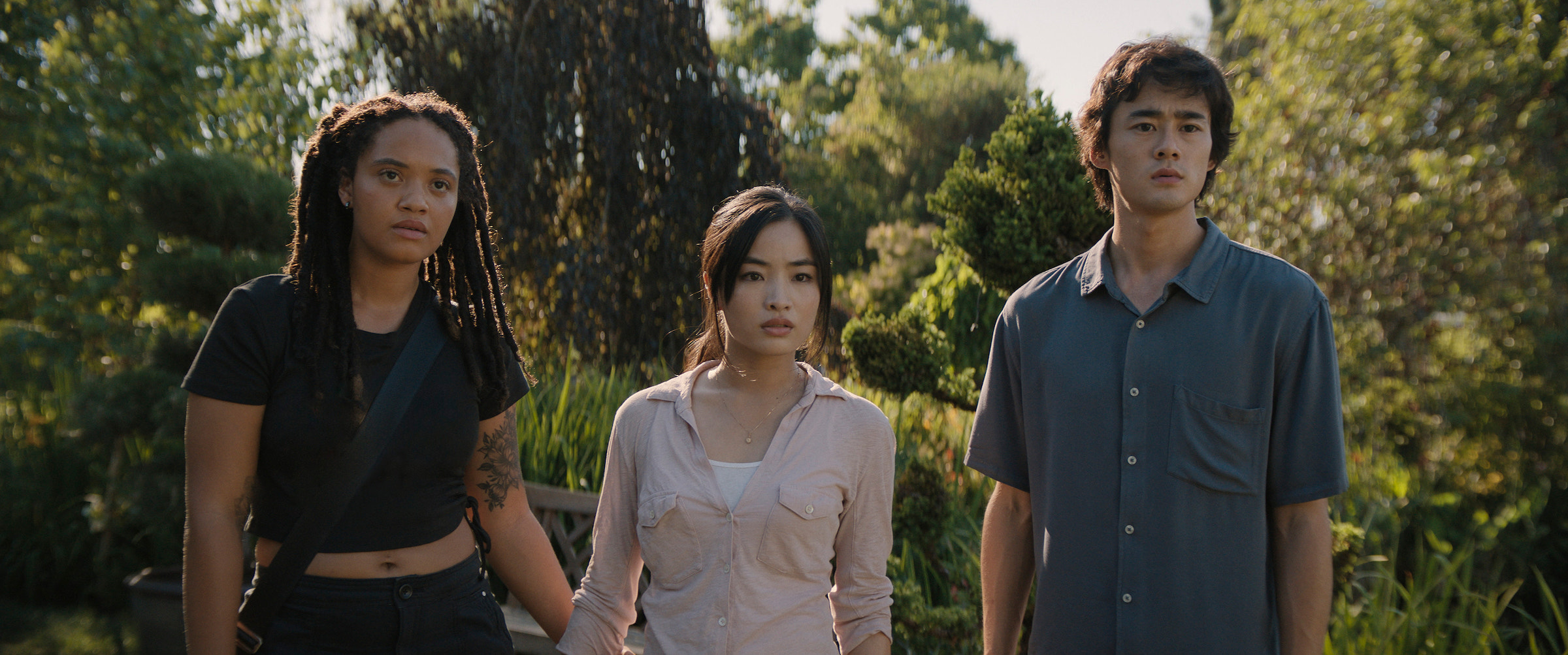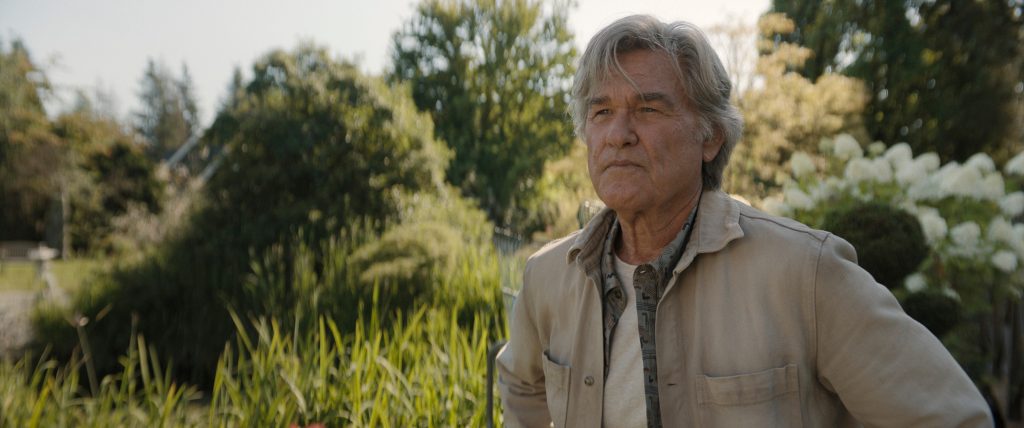We all know that the human characters are almost always the least interesting part of any Godzilla flick—so in some ways, it’s a bold move to make an entire TV series about them. That’s essentially what Apple TV+’s new series Monarch: Legacy of Monsters is: 10 episodes focused on the people present for the revelation that gargantuan monsters lived within the earth.
That means following groups of characters in two different timelines. In 2015, a year after the San Francisco Godzilla attack depicted in the 2014 reboot, Cate (Anna Sawai) and her newly discovered half-brother Kentaro (Ren Watabe) investigate their late father’s connections to Monarch, the mysterious organization tasked with researching the so-called “Titans” for over 50 years. They enlist the help of Kentaro’s ex May (Kiersey Clemons) and Lee Shaw (Kurt Russell), a man who once worked with their grandfather during his own Monarch days.
We also see Lee’s history play out in the 1950s timeline, with Wyatt Russell stepping into the role. In that timeline, Lee serves as an intermediary between the U.S. Army and his scientist friends at Monarch, Keiko (Mari Yamamoto) and Bill Randa (Anders Holm). (If you’ve seen 2017’s Kong: Skull Island, set in 1973, you’ve met an older version of Bill, played by John Goodman.)
Here’s what to know about how the MonsterVerse got to this point—and how Monarch, at its best, returns the franchise to its roots.
The origins of the franchise

When the reboot of Godzilla was released in 2014, it felt like an opportunity to start fresh. Nearly 30 cinematic depictions of the titular kaiju already existed at that point, stretching back to the character’s introduction in 1954. The vast majority of those movies were produced and distributed by Toho Co., Ltd. in Japan. But no American distributor had taken a real chance on Godzilla since Roland Emmerich’s 1998 attempt, a critical failure that performed below expectations domestically. Here was the chance for an ambitious American director to put their own stamp on the iconic “King of the Monsters.”
In the nine years since the critical and financial success of Gareth Edwards’s Godzilla, though, the American franchise has grown into a full-blown shared fictional universe at Warner Bros.—one not so different from (though much less prolific than) the Marvel Cinematic Universe. Kong: Skull Island brought the famous ape into the fold, while also introducing the idea of the Hollow Earth, an underground ecosystem where Titans roamed free, growing to massive sizes due to constant radiation. That mystical place appeared on-screen in 2019’s Godzilla: King of the Monsters, setting up 2021’s Godzilla vs. Kong, the first real culmination of the series. (Think The Avengers.) A sequel is due next year: Godzilla x Kong: The New Empire, which will delve even more deeply into the mythology of the Titans. In the meantime, we have Monarch, the first TV installment in the MonsterVerse. (Think, I guess, Agents of S.H.I.E.L.D.?)
Why the first MonsterVerse movie is still its best

In my book, the 2014 film remains the clear peak of the franchise. Despite the oft-repeated refrain of “needs more Godzilla!” from detractors, it’s the balance of humans and monsters that gives this one a real weight that some of the other movies lack. That’s not to say that the human characters overcome the typical stereotype of their kind in a Godzilla movie; after all, few viewers are clamoring to see protagonist Ford (Aaron Taylor-Johnson) and his family reappear in another movie, though their story of separation and reunion is emotionally effective enough.
What director Gareth Edwards really gets right is the sense of scale here. In every scene where one of the monsters appears—whether Godzilla himself, or one of two insect-like MUTOs (“Massive Unidentified Terrestrial Organisms”)—you feel the gravity of what it would be like to experience this. Edwards does that by pairing effective CGI with some old-fashioned Spielbergian formal tricks, like grounding each scene with shots of puny eye-level spectators gazing in awe and horror at the unfathomably large creatures towering over them. Even when the characters aren’t precisely “well-written,” they’re always brilliantly used, from both a visual and thematic perspective. That these people feel vaguely like cardboard cutouts is, in a way, the point; when giant monsters roam the earth, humans become incidental.
Most of the MonsterVerse movies are at least entertaining (with exceptions—sorry, King of the Monsters), but the continual effort to combat “needs more Godzilla!” complaints has resulted in movies that feel relatively weightless. Kong shows up very early and often in Jordan Vogt-Roberts’s Skull Island, for example; but while in some ways that choice made for a superficially exciting spectacle, it robbed the story of tension and perspective. Under Edwards’ direction, by contrast, every appearance of Godzilla leaves me grinning and a little shaken, even watching it for the third time.
How Monarch succeeds (mostly) in channeling Gareth Edwards

To be fair, watching Monarch does trigger that “needs more Godzilla!” impulse sometimes. Despite the increased screen time, few scenes early on emotionally are as emotional as the flashback of Bryan Cranston watching a collapsing nuclear reactor swallow his wife early in Godzilla, or as laugh-out-loud funny as John C. Reilly in Skull Island. And few of the directors involved have quite as much experience with spectacle as Edwards (or as much specific experience with creature features, established with his 2010 debut Monsters).
But the crucial sense of scale is there, in both the big monster scenes and elsewhere. And the series uses its connections to the ever-expanding MonsterVerse chronology to bring to life the emotional realities that would linger long after Godzilla slinks back into the ocean. For example, during Cate’s visit to Tokyo in the first episode, she’s repeatedly triggered and brought back to her traumatic experience on the Golden Gate Bridge during “G-Day” last year. Those visceral glimpses are effective in reminding us that seeing a god-like being wreck your city could likely affect you on a deep level, even if you’re not unlucky enough to witness school buses full of children plunging to their deaths. That exploration of PTSD feels much more vivid and true-to-life than, say, Kyle Chandler’s anti-Godzilla revenge wish in King of the Monsters.
Monarch doesn’t concern itself too much with directly addressing events from later in the MonsterVerse chronology, and it’s better off for it. Sure, there are plenty of Easter eggs here for those interested, and certain scenes revolve around moments from prior installments, like the 1954 Bikini Atoll Godzilla sighting from the opening of the 2014 movie. But what makes Monarch: Legacy of Monsters worth watching, in the end, is its willingness to take a page from Godzilla and zero in on the human response to disaster. After all, largeness only means something if there’s something small to compare it to.
